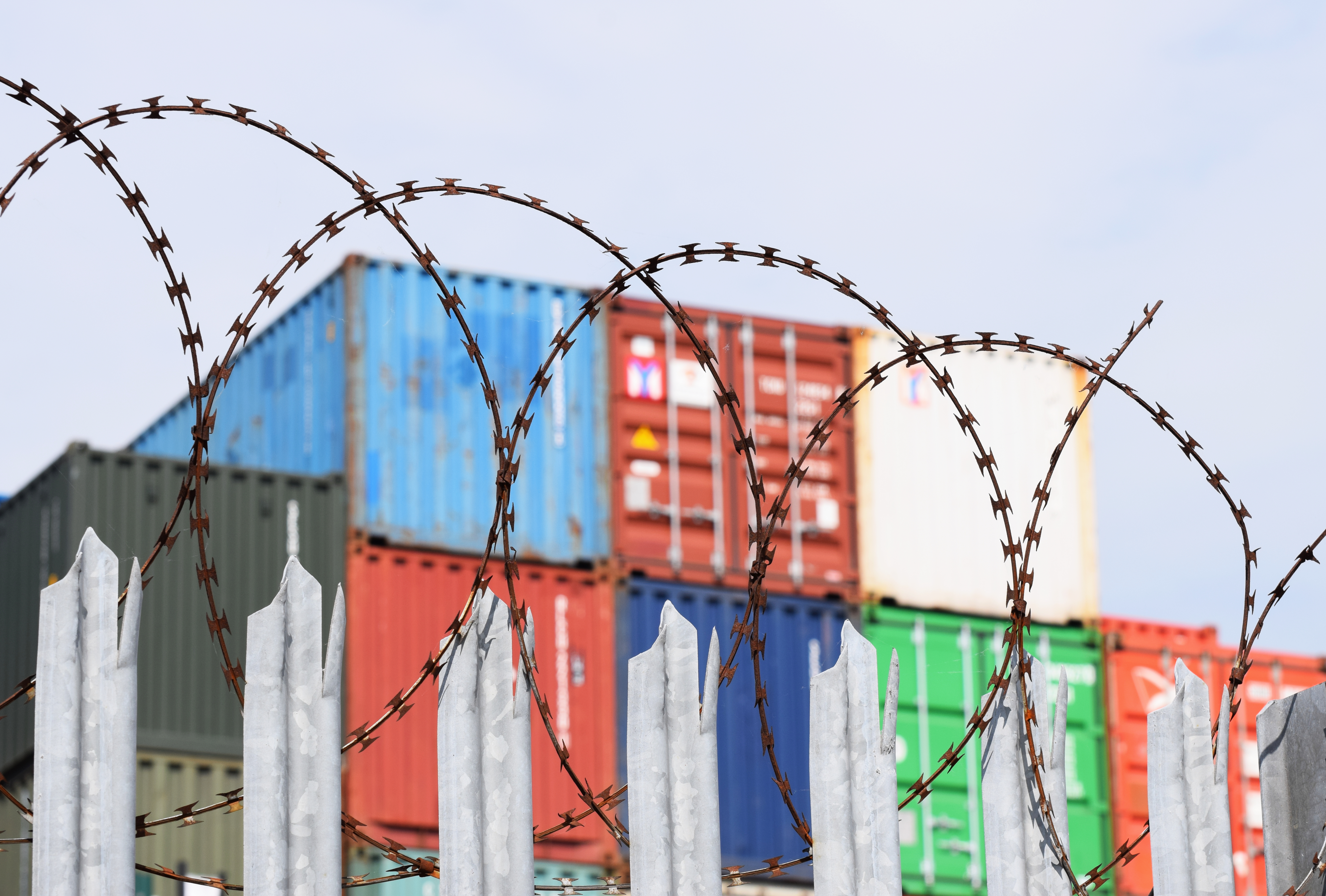The importance of relationships in global trade

Exports are a key driver of economic growth in lower-income countries. Whether electronics from Vietnam, coffee from Colombia, or garments from Bangladesh, export-led growth has played a key role in reducing poverty across many countries. As such, economists and policymakers are often keenly focused on how best to leverage international trade for their own country’s growth and development. In other words, what can countries do to increase productivity and profits for their exporting firms?
 Julia Luckett
Julia Luckett
Guillermo Noguera at the 2025 Simon Kuznets Memorial Lecture.
In a paper in the Quarterly Journal of Economics, EGC faculty affiliate Guillermo Noguera and coauthors examine a novel dimension of this question: the relationships between exporters and their foreign buyers. Using data from the Bangladeshi textiles sector, they find that garment sellers who form long-term relationships with their buyers can charge higher prices and ultimately increase their profits – even when accounting for the higher costs of maintaining those relationships, especially during economic shocks.
Many foreign companies engaged in international trade are “spot” buyers who import goods and inputs from whatever firm is offering the lowest price at the time of purchase. Others, however, are “relational” buyers – who develop long-term relationships with a fewer number of trusted suppliers, in order to ensure quality and consistency.
Spot buyers tend to pay lower prices but are more vulnerable to supply chain disruptions; relational buyers avoid these disruptions by paying higher prices.
Long-term relationships with buyers are valuable: Bangladeshi garment sellers can, on average, expect to charge relational buyers 11% more than what they would charge spot buyers for the same products, equivalent to roughly 30% of yearly profits.
The profits and growth of an exporting firm are closely tied to their relationships with foreign buyers, who can be divided into two broad categories. At one extreme are “spot” buyers, who buy from a wide range of suppliers, typically choosing whatever seller is offering the cheapest price at the time of purchase. At the opposite end are “relational” buyers, who establish long-term relationships with dedicated suppliers over extended periods of time. While relational buyers often pay higher prices for the same products, they enjoy increased reliability from their sellers – especially during shocks that interrupt the supply chain, when sellers are often forced to pay higher costs in order to continue serving their buyers. This contrast is especially relevant in lower-income countries, where supply chain interruptions can be very common.
Guillermo Noguera, a Senior Lecturer in the Yale Department of Economics and an EGC affiliate, and coauthors Julia Cajal-Grossi and Rocco Macchiavello were interested in the effects of these dynamics. Do exporting firms make higher profits by selling to spot buyers or relational buyers – and what would explain such differences? In a country like Bangladesh, with an economy that is highly reliant on its apparel exports, would a shift towards stronger buyer-seller relationships benefit exporting firms?
An unprecedented look into buyer-seller relationships
Economists have long been focused on the relationships between buyers and sellers. However, examining these relationships empirically is challenging, as it requires highly granular data on prices and firm costs. Costs, in particular, are difficult to estimate, since few data sources track the quantities and prices paid by firms for labor and inputs. Another challenge is the difficulty of directly observing the strategies used by buyers when selecting suppliers.
“When studying global value chains, we typically rely on fairly aggregated data,” Noguera said in an EGC interview. “Such research provides a broad picture across sectors, countries, and over time, but it is silent on the inner workings of specific global value chains.”
In their new paper, the researchers were able to overcome these challenges by using a novel data set on Bangladesh’s garment sector. Due to the Bangladeshi government’s unique way of collecting data on imported inputs that are eligible for a tax exemption, the data set includes highly detailed information on the type, price, and quantity of key inputs like fabric. For the first time, the researchers could directly observe a firm’s production costs and precisely calculate their markups and profits.
“Directly observing garment orders was an incredible opportunity to zoom in on the production process and study the relationships between garment sellers and their international buyers,” Noguera explained.
Okuyiga and Lakshmi Ratan in NextBillion: What the Backlash to Trade Liberalization Means for Business Growth and Global Inequality
March 14, 2023: In this article, EGC's Aishwarya Lakshmi Ratan and Bomi Okuyiga discuss deglobalization and its effects on business growth and global inequality.

The high value of long-term relationship
Noguera and his coauthors began by designing a model to explain how Bangladeshi garment sellers and their international buyers interact. In the model, buyers seek low prices but also reliability, given the frequency of supply chain disruptions in low-income country contexts – whether due to political instability, domestic financial shocks, or shipping delays, like those caused by the Covid-19 pandemic.
The researchers’ model also accounted for the two types of buyers. As noted, spot buyers pay lower prices on average but face higher vulnerability to supply chain shocks. In other words, if a seller is not worried about their long-term relationship with a buyer, they might not bother being prompt in delivering products when it is costlier to do so. Relational buyers, by contrast, may pay higher prices – but they enjoy greater reliability over time, even during shocks. According to the model, buyers (i.e., foreign companies) decide their own sourcing strategy, with little variation across products.
After analyzing the Bangladeshi data, the team found that it confirmed their model’s prediction: garment sellers who produced orders for relational buyers could charge higher prices for the same products as those who sold to spot buyers. The researchers estimated that a garment seller currently selling to spot buyers can expect to charge 11% more for the same product after switching to a relational buyer.
But does this translate into higher profits, given the higher costs of maintaining reliable supply during shocks? Indeed, the researchers calculated that shifting from spot to relational buyers can be expected to increase a garment seller’s net annual profits, and that the value of that relationship is roughly 30% of yearly profits.
Directly observing garment orders was an incredible opportunity to zoom in on the production process and study the relationships between garment sellers and their international buyers.
– Guillermo Noguera
A growth opportunity for the global economy
These findings shed light on the often-unobservable dynamics between sellers and buyers in international trade, offering important lessons for economists and policymakers alike. From the perspective of exporting firms and their governments in lower-income countries, finding ways to do more business with relational buyers has great potential for increasing profits and supporting firm growth.
"We find that forming relationships with relational buyers can be highly beneficial for sellers,” Noguera said. “This is particularly relevant for exporting firms in lower-income countries. The broad takeaway of our paper is that the sourcing strategy of the buyer can be an important dimension of upgrading for these firms."
According to the researchers’ model, too few buyers choose a relational sourcing strategy compared to the global social optimum. While some of the world’s largest garment buyers have a highly relational approach – including The Gap, Levi Strauss & Co., and H&M – others follow different strategies. Zara, for example, only sources relationally from its suppliers in northwestern Spain (close to where its headquarters is located), taking the spot approach in more distant countries like Bangladesh. This presents an opportunity for governments in low-income countries to attract relational buyers and incentivize spot buyers to source more relationally. For example, policymakers could subsidize foreign buyers to visit their country and meet with suppliers, encouraging them to establish long-term relationships. They could also adopt policies that are important to relational buyers, such as those that ease the costs of doing business.
Looking ahead, Noguera and his coauthors highlight areas where further research is needed – such as generating a better understanding of why buyers choose a given sourcing strategy. Likewise, more research is needed to estimate the other potential benefits from relational sourcing, such as the alleviation of certain contracting problems. By gaining a better understanding of how these buyer-seller dynamics can support firm growth, economists and policymakers can help ensure that low-income countries maximize their benefits from engaging in international trade.
Research Summary by Rada Pavlova